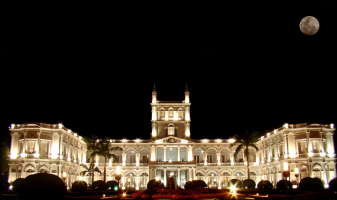Top 9 Best Places to Visit in Nepal
Nepal is a fascinatingly diversified country that draws tourists for a variety of reasons. Some come for the mountains, expecting to climb or trek in the ... read more...Himalayas, while others are drawn to the culture and the famous city of Kathmandu, and yet others come in search of spiritual awakening. Nepal can be an adrenaline rush, a cultural education, a life-changing experience, or a combination of the three. Read through this list of Nepal's top attractions to find the best spots to visit.
-
Kathmandu, Nepal's capital and largest metropolis, is unlike any other city on the planet. The city's aging structures stand in stark contrast to the vibrant energy that pervades the streets. While street vendors push their wares and people go about their everyday lives against a backdrop of antique temples and carved statues, the smell of incense wafts from storefronts.
Kathmandu, along with Bhaktapur and Patan, was one of three rival royal towns for hundreds of years. These three are so close together that they almost run into each other today.
Durbar Square, the largest of the palace squares in the three royal capitals and a UNESCO World Heritage Site, has long been a centerpiece of Kathmandu. Here you will see temples and monuments of all shapes, sizes, styles, and faiths. The 2015 earthquake badly damaged Kathmandu's Durbar Square, with many buildings wrecked beyond repair, but it remains a unique location to visit.
Location: Kathmandu, Nepal
Entrance fee: N/A
Best time to visit: September to November
Hours: N/A
https://www.traveloka.com/ 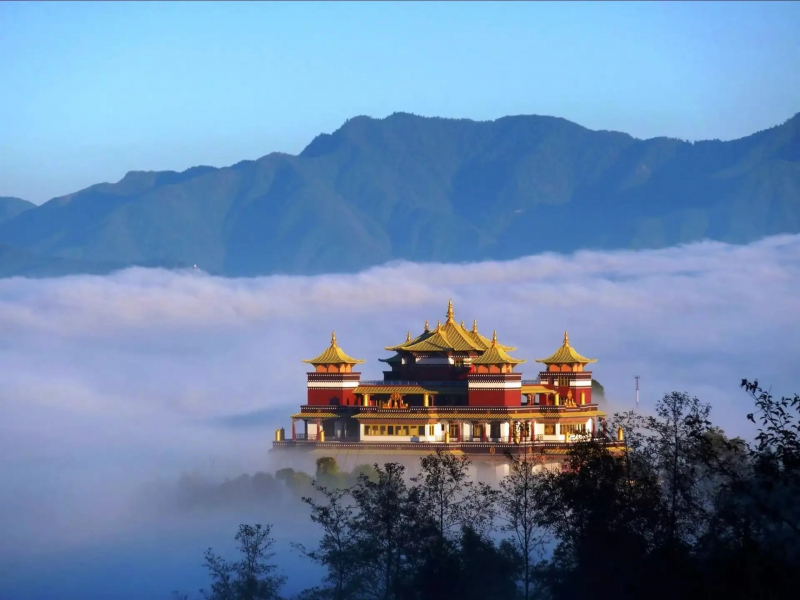
https://www.instagram.com/10adventures/ -
The Himalayas are a mountain range in Asia that separates the Indian subcontinent's plains from the Tibetan Plateau. The range contains some of the world's highest peaks, including Mount Everest, the world's highest mountain. In the Himalayas, there are over 100 peaks that are higher than 7,200 meters.
The Nepali Himalayas, which are home to eight of the world's ten tallest mountains, stretches the length of the country and provide unrivaled trekking opportunities. Nepal is home to Mount Everest, the world's highest summit, as well as 1,310 peaks over 6,000 meters. Soaring snow-capped peaks, gin-clear lakes, terraced green slopes, secluded settlements, and chains of fluttering prayer flags provide for breathtaking scenery. Best of all, aside from obtaining a Trekkers' Information Management Systems (TIMS) card and paying any applicable national park fees, you may hit the trails with very little preparation.
The most popular treks are the Everest Base Camp, Annapurna Circuit, and Langtang Valley treks, although there are many other less-traveled but still stunning routes to take. The dramatic two- to three-week journey to the base of Nepal's third tallest peak, Kanchenjunga, in the extreme east of the country, is a breathtaking path with only a few trekkers.
Location: The Himalayas, Nepal
Entrance fee: N/A
Best time to visit: October and November
Hours: N/A
https://www.instagram.com/10adventures/ 
https://www.lonelyplanet.com/ -
Boudha is a stupa in Kathmandu, Nepal, also known as Boudhanath, Khasti Chaitya, and Khsa Chaitya. Its vast mandala makes it one of Nepal's and the world's largest spherical stupas, located around 11 kilometers from Kathmandu's center and northeastern suburbs.
The Boudhanath Stupa, located just outside of Kathmandu, is one of the world's largest stupas, dating back to the 6th century, probably even earlier. It, like Bhaktapur, is a UNESCO World Heritage Site and is located on the old trade route to Tibet.
The stupa is a sign of enlightenment in and of itself, but the symbolism at Boudhanath is particularly strong. Each form represents one of the five elements: earth, water, fire, air, and sphere, which are also the five Buddhas' qualities. Their unity, reflected in abstract form in the form of the stupa, represents the structure of the universe itself. The stupa was slightly damaged during the 2015 earthquake, however, it has since been rebuilt.
Location: Stupa, Boudhanath Sadak, Kathmandu 44600, Nepal
Entrance fee: 400 NPR
Best time to visit: early morning or at dusk
Hours: Mondays - Sundays: 24 hours
https://www.lonelyplanet.com/ 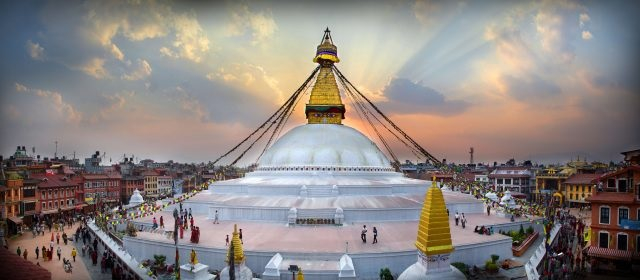
http://vietrigpa.org/ -
Chitwan National Park is the place to visit if you want to see Nepal from a new perspective. This is a fantastic spot to see wildlife and has a safari-like feel. Chitwan has a tropical monsoon climate, which is considerably different from what you'd expect to find in Nepal, at a height of only 100 meters in some regions, much lower than Kathmandu's 1,400 meters.
Visitors come to see the wildlife. Rhinos, Bengal tigers, leopards, sloth bears, gaur (buffalo), deer, and a variety of other animals live in the park. The rivers and streams are home to freshwater dolphins (Gangetic) and crocodiles, however, they are rarely observed. Chitwan is a haven for ornithologists, with over 500 kinds of birds. Tours departing from the lodges take you into the park on foot or, more commonly, on elephants for up-close encounters with the animals.
Chitwan is a world cultural heritage site located southwest of Kathmandu, close to the Indian border. It is on the UNESCO list of world cultural heritage sites. Chitwan is best visited between October and February. Although the mornings can be relatively cool, average temperatures stay around 25 degrees Celsius (77 degrees Fahrenheit) with heavy humidity. The monsoon season runs from June to September, with frequent and heavy rain.Location: GFM2+JXW, Sonepur 44200, Nepal
Entrance fee:- Foreigners: Rs 2000
- Locals: Rs 150
- SAARC Country: Rs 1000
- Children Below The Age Of 10: Free
Best time to visit: October to early March
Hours: 6 am - 5:30 pm
https://zoologicalparknational.com/ 
https://www.instagram.com/its_me_rm_rana/ -
Bhaktapur, the third of the "Royal Cities," is located just outside of Kathmandu on the old trade route to Tibet. The commerce route was both an arterial link and a key source of wealth for Bhaktapur. Because of its relative isolation at the time, the city was able to grow independently and in ways that set it apart from the other two cities.
In contrast to Patan and Kathmandu, Bhaktapur has a predominantly Hindu populace. Durbar Square is the greatest site to start a tour of the city, as it is home to the royal palace as well as a number of temples. The entire area has been designated as a UNESCO World Heritage Site. Many of the buildings in Bhaktapur's Durbar Square were destroyed in the 2015 earthquake; the main temples are nearly complete, but development in much of the surrounding area has been slow.
A walk around Bhaktapur, which was once its own kingdom, feels like a trip back in time, especially if you stay overnight and explore the city after the daytrippers have left.
Location: Bhaktapur, NepalEntrance fee: N/A
Best time to visit:- March to April
- October to November
Hours: N/A
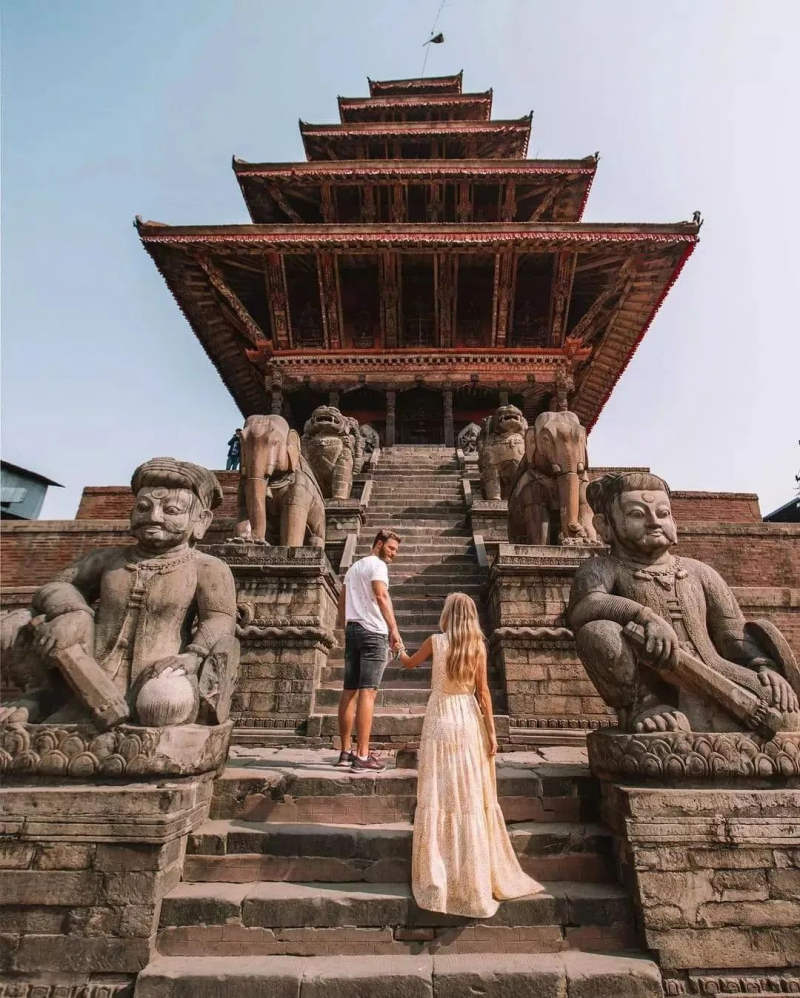
https://www.instagram.com/nepal__travellers/ 
https://www.instagram.com/emitaez/ -
Pokhara is one of Nepal's most scenic cities, located at the base of the foothills and surrounded by some of the world's highest mountains, including Dhaulagiri, Manaslu, and Annapurna I. Pokhara is the Himalayan gateway and the beginning point for hikes to Jomsom and the Annapurna region for trekkers. It's also a great place to unwind for a while, either before or after a hike.
Pokhara is situated on the shores of the glistening Phewa Lake, with views of the rugged Annapurna and Manaslu mountain ranges. Lake Phewa is great for people searching for a little relaxation, with its cluster of lakefront hotels, restaurants, and shopping. Travelers flock to the area to relax on the lakeshore and participate in thrilling activities in the neighboring mountain valleys.Pokhara is an excellent place to organize whitewater rafting, kayaking, mountain biking, canyoning, and paragliding trips in the surrounding countryside, as well as straight-up adrenaline-charged activities like bungee jumping and ziplining, in addition to being the jumping-off point for some of Nepal's most popular treks (including the famous Annapurna Circuit). It is Nepal's second-largest city by population after Kathmandu, however, it does not feel like a huge metropolis. You'll notice the considerably cleaner air and pleasant atmosphere almost immediately as you travel 200 kilometers east of Kathmandu.
Location: Pokhara, Nepal
Entrance fee: N/A
Best time to visit: September to November
Hours: N/A
https://economictimes.indiatimes.com/ 
https://traveltriangle.com/ -
Lumbini is renowned for being the birthplace of Siddhartha Gautama, also known as Buddha Shakyamuni, the historic Buddha. Lumbini is a nice stopover on the way from Pokhara to the Chitwan National Park and is located around 250 kilometers from Kathmandu.
Lumbini is one of Buddhism's holiest locations, located a short drive west of the Terai hamlet of Siddharthanagar (also known as Bhairawa). The Maya Devi Temple, located in the heart of the Sacred Garden, commemorates the birthplace of Siddhartha Gautama, also known as the Buddha, in 563 BCE.
This deeply sacred location is surrounded by a massive complex packed with temples built by Buddhist communities from all over the world in a wide range of architectural styles, as well as a museum, cultural center, and a towering white-and-gold peace pagoda in a park frequented by Sarus cranes.There is a sense of calm in this pilgrimage town, which is a UNESCO World Heritage Site. The majority of the tourists are Buddhist pilgrims from all around the world who are retracing Buddha's steps through his life's stages. The Maya Devi Temple, which is devoted to Buddha's mother, is thought to be the location of Buddha's birth. It houses an old stone carving representing Buddha's birth from the 2nd century AD.
Location: Rupandehi District of Lumbini Province, Nepal
Entrance fee:- Foreigners: 500 rupees
- Locals: free
- Indians: 16 rupees
- Sri Lanka, Pakistan, Bangladesh, Bhutan: 200 rupees
Best time to visit: October and November
Hours: Mondays - Sundays: 5 am – 7 pm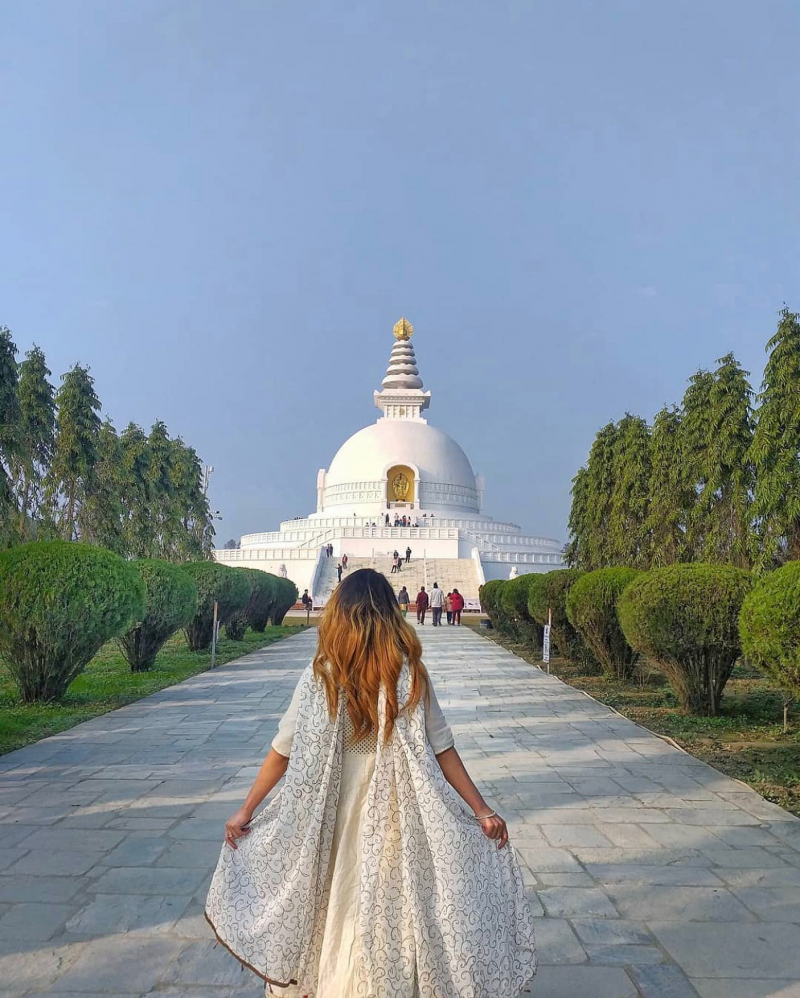
https://www.instagram.com/visualizenepal/ 
https://www.instagram.com/shrutikafle/ -
Bandipur, one of Nepal's most lovely towns, is a living museum of Newari culture, a wonderfully maintained settlement crowning a towering ridge with traditional row buildings lining its main street. Although it has required a lot of work to keep the town's magic alive while expanding it as a tourist destination, time seems to have stood still here. Temples and municipal structures have been dragged back from the brink of ruin, while derelict buildings have been reincarnated as cafes and lodges.
Bandipur has been described as a "living museum" because of its array of 18th-century Newari homes and temples set on a ridge in the Middle Hills, high above the route from Kathmandu to Pokhara. It provides a mesmerizing mélange of appealing guest rooms, lovely cafes, pedestrianized streets, sprinkled shrines, breathtaking vistas, and several day hikes, and was formerly a key stop-off on the lucrative India-Tibet trade route, making it a great destination for a break from the crowds.
Location: Bandipur, Tanahun District, NepalEntrance fee: N/A
Best time to visit: March to May
Hours: N/A
https://www.spotlightnepal.com/ 
https://www.spotlightnepal.com/ -
Bardiya National Park, formerly known as Royal Bardia National Park, is a protected area in Nepal that was established in 1988. It is the largest and most pristine national park in Nepal's Terai, with a 968-square-kilometer area bordering the eastern bank of the Karnali River and bisected by the Babai River in the Bardiya District.
Bardia National Park, located 400 kilometers (249 miles) west of Chitwan, is larger, has a wider range of ecosystems, and attracts significantly fewer visitors than its more well-known twin. The reserve has one-horned rhinos, tigers, elephants, and leopards, as well as gharial crocodiles and rare Gangetic dolphins, and is accessible from the tranquil village of Thakurdwara.
Although spotting these creatures may take a little longer and patience than in Chitwan, Bardia's beautiful surroundings and lack of hordes of visitors upsetting the wildlife make up for it. Safaris in the early morning and late afternoon offer the best possibilities of seeing animals.
Address: 9H75+WVR, Bansagadhi, Nepal
Entrance fee:- Locals: 100Rs
- Foreigners: 1,500Rs
- SAARC countries: 750Rs
Best time to visit:
- around 10 am (before elephants leave for the day on patrols)
- February - July
- September - December
Hours: Mondays - Sundays: 10 am - 6 pm

https://www.instagram.com/communityhomestaynetwork/ 
https://www.instagram.com/noemie.rche/






